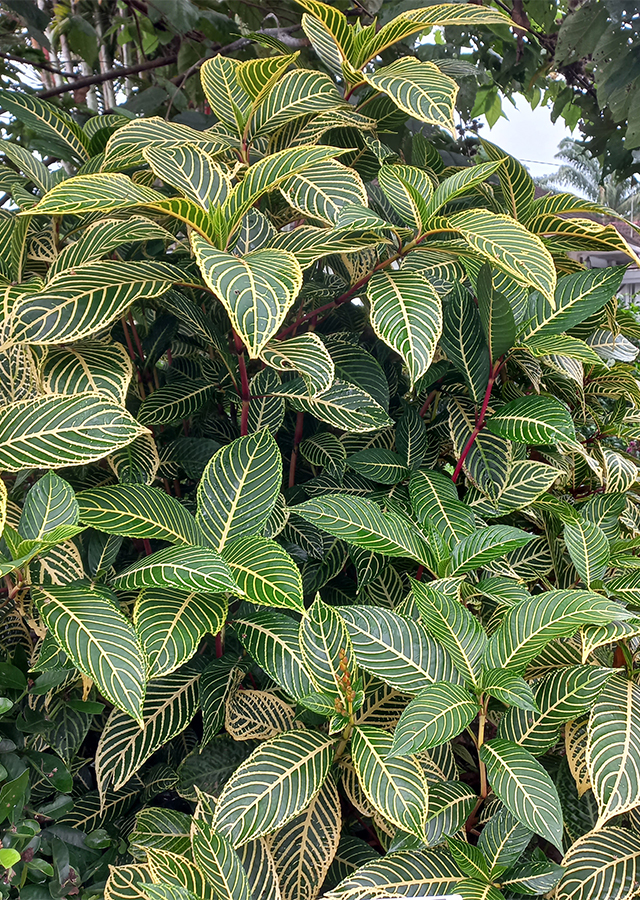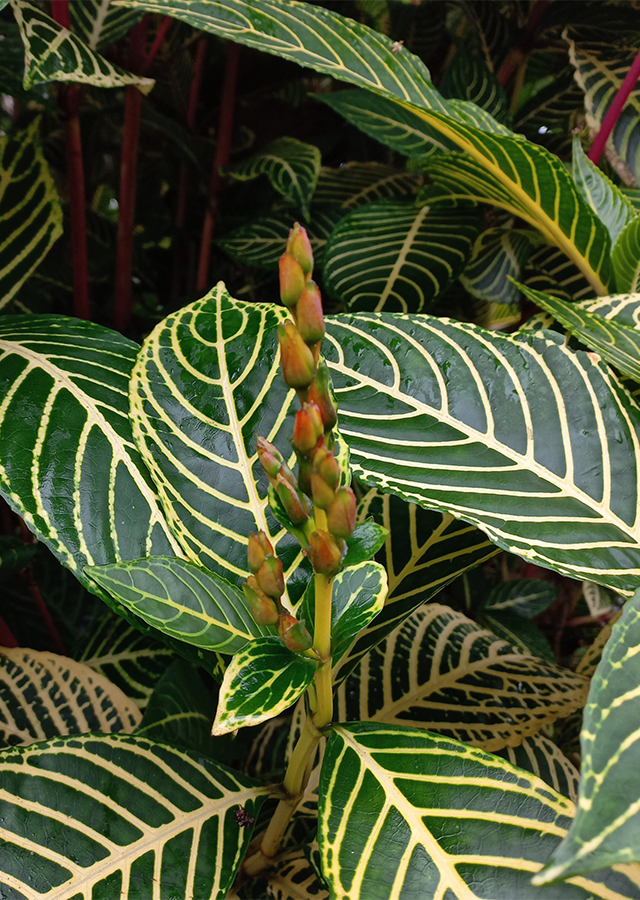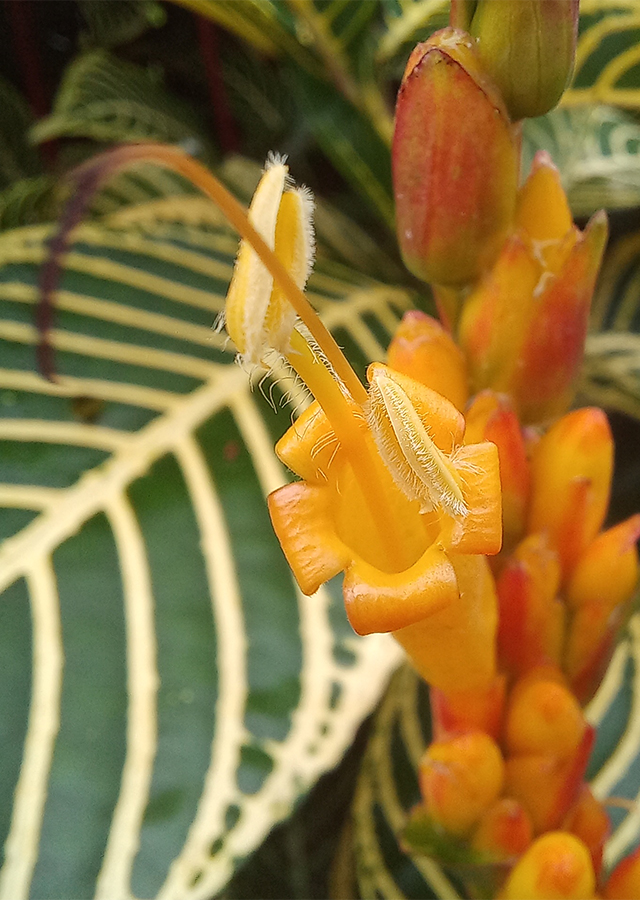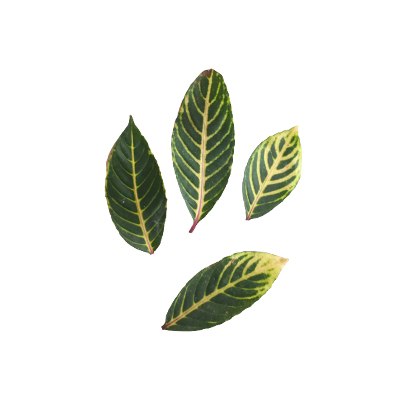Shrubby Whitevein
Sanchezia oblonga Ruiz & Pav.
Acanthaceae
Location in our garden
Principal



Synonym
Ancylogyne peruviana Nees
Sanchezia helophila Leonard & L.B.Sm.
Sanchezia speciosa Leonard
Habitus
Shrubs. A evergreen erect perennial shrub that grows to 3 m tall.
Part Used
Leaves
Roots
Stem
Growing Requirements
Full Sunshine
Habitat
Forest
Shrublands
Terrestrial
Overview
Sanchezia speciosa is native to the wet forests of Latin America. It is naturalized in low elevation wet forests in Central America, the Caribbean, and several islands in the Pacific Ocean. It is has environmental uses and as a medicine. Extracts from leaves and stems have been analysed as potential sources of natural anti-oxidants. It is economically important in the horticultural and nursery trade. It has been widely commercialized and cultivated as an ornamental and as a hedge, screen or border plant in tropical and subtropical regions of the world. The ability of this species to tolerate shaded conditions and spread vegetatively means that it has the potential to spread much further than it has to date.
Vernacular Names
Sanchesia (Spanish), Large-bract sanchezia (English).
Agroecology
Sanchezia speciosa grows best in moist environments. It is present in the understory of native and secondary wet forests, along streams and riverbanks, and in forest edges and disturbed secondary forests at lower elevations. It is most commonly found in wet habitats from sea level to about 200 m with warm temperature and high water availability. It can grow in both open sunny areas and shaded areas in the understory of native and disturbed forests. Prefers to grow in areas with temperature of 15-35 ºC, and mean annual rainfall of 800- 3,000 mm. It is also tolerant to saline conditions.
Morphology
- Stem - smooth bright green or purple stems.
- Leaves - simple, opposite, large variegated, blade oblong to elliptic, 10-40 cm long, green or with yellow veins. Fruit a narrowly cylindrical capsule, infrequently formed in cultivation
- Flower - flowers several, borne in clusters on an erect terminal spike sometimes divided at the base, with an ovate orange to red bract below each flower cluster. Corolla of fused petals, tubular, 4.5-5.5 cm long with five short, rounded lobes, yellow to orange, bearing oblanceolate orange sepals half as long, two protruding stamens, continuously through the year; .
- Fruit - a narrowly cylindrical capsule, infrequently formed in cultivation.
Cultivation
- Generative propagation is by seed.
- Vegetative propagation is by stem fragments and cuttings.
Chemical Constituents
Phytosterols, flavonol glycosides, palmintic acid, linoleic acid, oleic acid, stearic acid, benzyl alcohol glycosides, sinapic acid glycoside esters, ethyl rosmarinate, sinapic acid-O-glucoside, dihydrosinapic acid-O-glucoside, catechin-O-arabinoside, rosmarinic acid-3’-O-glucoside, and phenylpropane glycerides.
Traditional Medicinal Uses
Sanchezia speciosa has antibacterial, antioxidant, antifungal and antiinflammation activities.
Part Used
Reference Sources
- Kew Royal Botanic Gardens. (No date). Plants of the World Online: Sanchezia oblonga Ruiz & Pav.. https://powo.science.kew.org/taxon/54890-1. 22-05-2022.
- Ravasi, J.M., et al. (2020). GC-MS and HPLC-ESI-MS-MS Characterization of Sanchezia oblonga (Acanthaceae) Extracts. Journal of Food Research, Vol. 9(1). doi:10.5539/jfr.v9n1p57. Also availabale: https://pdfs.semanticscholar.org/0c26/8d6f455736d458b5b924ef1fd3cc4be7c8df.pdf.
- Rojas-Sandoval, J., and Acevedo-Rodríguez, P. (2014). Invasive Species Compendium: Sanchezia speciosa (shrubby whitevein). https://www.cabi.org/isc/datasheet/120148. 22-05-2022.



